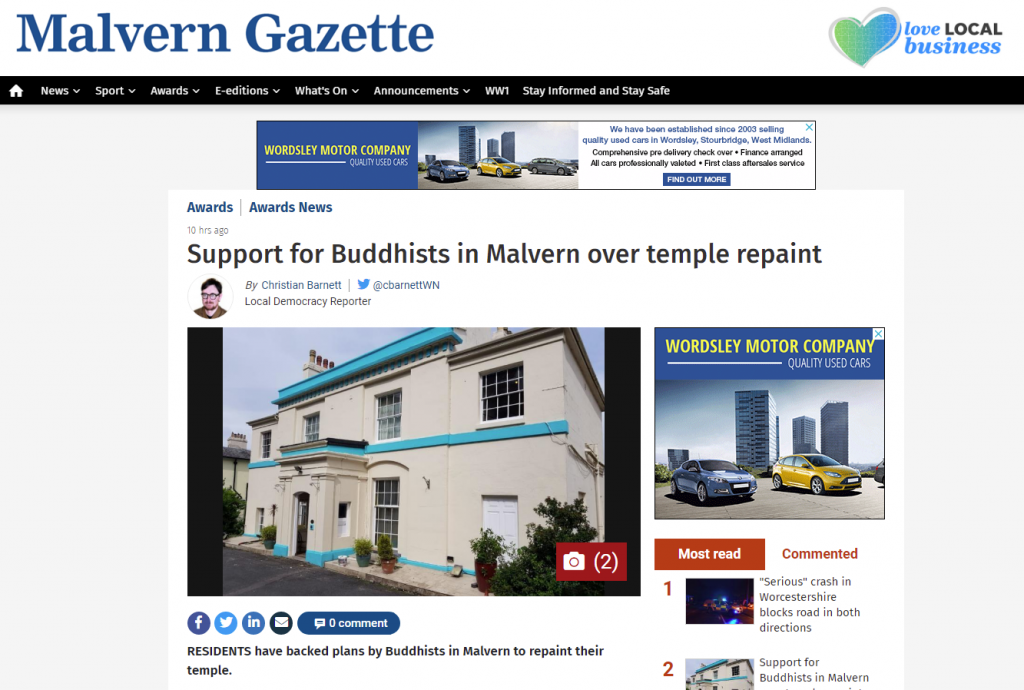Temple in the News
by Kaspa

At lunchtime today a photographer for a national news agency came and took a photo of me standing in front of the temple.
About ten days ago Bright Earth Buddhist Temple was in the Malvern Gazette. Then we were in the Worcester News, then the Birmingham Mail. Today we were in the Gazette again and this agency photographer rang the doorbell unexpectedly.
Why all the attention?
A few months ago when we were repairing the rendering and repainting the front of the temple we took the opportunity to change the highlight colour. We had some independent advice that assured us that a recent change in planning law meant we no longer needed to apply for permission to change the colour.
It looked so much better after the repair and repaint. Tending to the front of the building was long overdue and after a hard winter the building looked pretty tatty.
A few weeks ago someone from Malvern wrote to the council to complain about the change. Contrary to the advice we received Malvern council insisted we applied for retrospective planning permission. I spent half a day filling out forms and thought no more about it until someone sent me a link to the story in the Gazette.
The Gazette had seen the application on the council website, seen that there were three comments objecting to the change in colour, took a few quotes from the paperwork I had submitted and created their story. They didn’t come and ask me for a comment.
Satya mentioned the news story on Facebook and within a day or two there were lots of positive comments both on social media and on the planning application. When I counted yesterday there were about seventy positive comments on the council website.
In response Worcester News ran their second story: local community approves of new paintjob! And the press agency dropped by.
I’m grateful and pleased so many people took the time to say they like the new look, and I’m sorry that not everyone likes it. Despite those few complaints I’m happy with the change myself.
The highlight colour used to be red. A colour strongly associated with the Buddhist organisation we left at the end of last year. Whilst we were having the render repaired and the front repainted it seemed like a good opportunity to change that colour.
Turquoise is associated with awakening in Buddhism, and is the predominant colour of the Earth seen from space. Both those reasons appealed to us.
What will the national press make of the story?
I suspect that ‘local community likes paint job’ is not that newsworthy. The agency photographer and his editor said they were aiming for a more sympathetic story and wanted us to put our version across. We’ll see if anything comes of it.
Personally I’d much rather the press gave their attention to more important matters, like the urgent action that’s required to mitigate the climate crisis.
Of course we hope that the planning permission goes though. After a year and a half of being closed our donations have been lower than usual and it would be great not to have to spend any money on repainting.
If you’d like to make a donation to support the work of the temple you can do that here.

